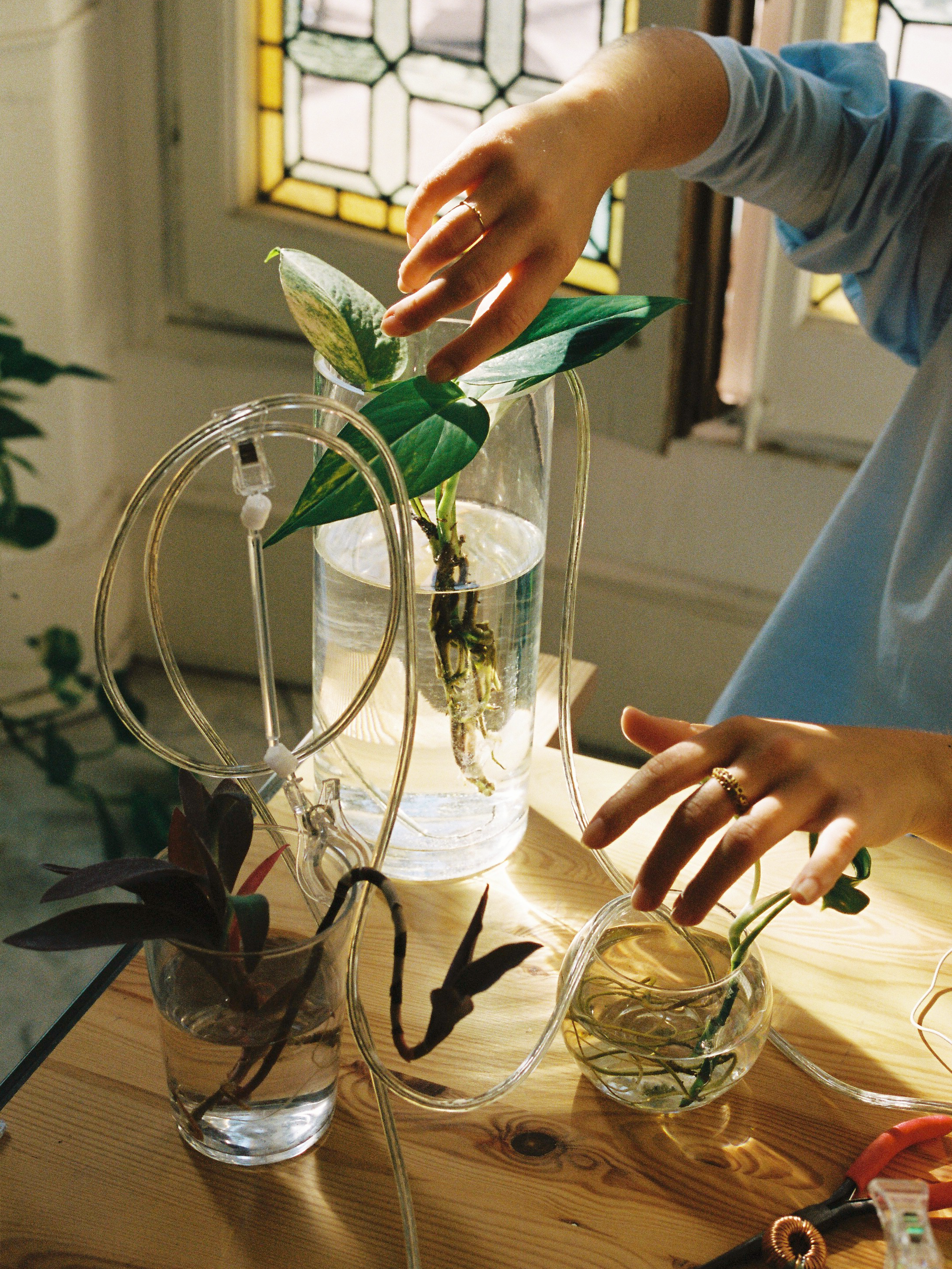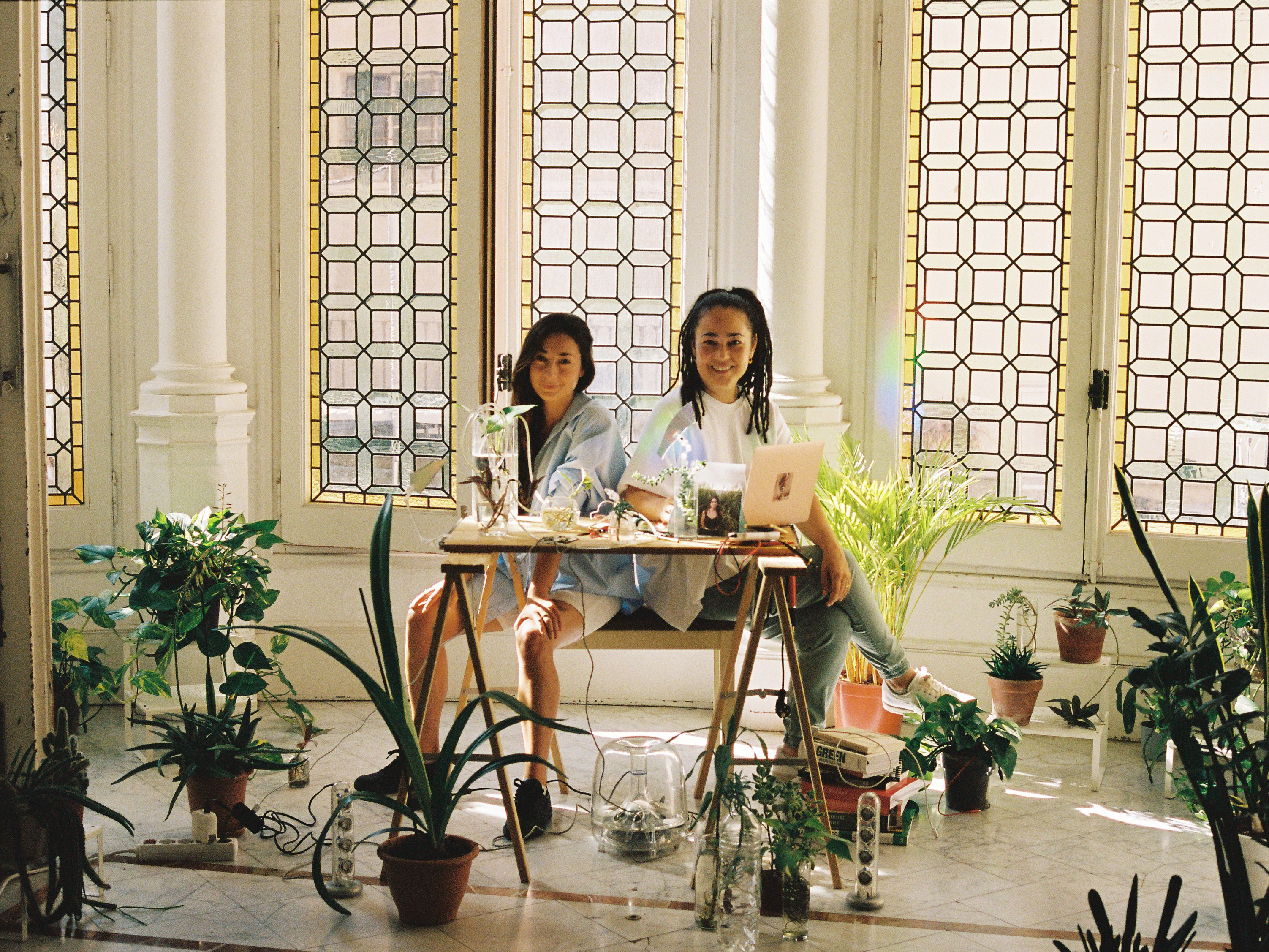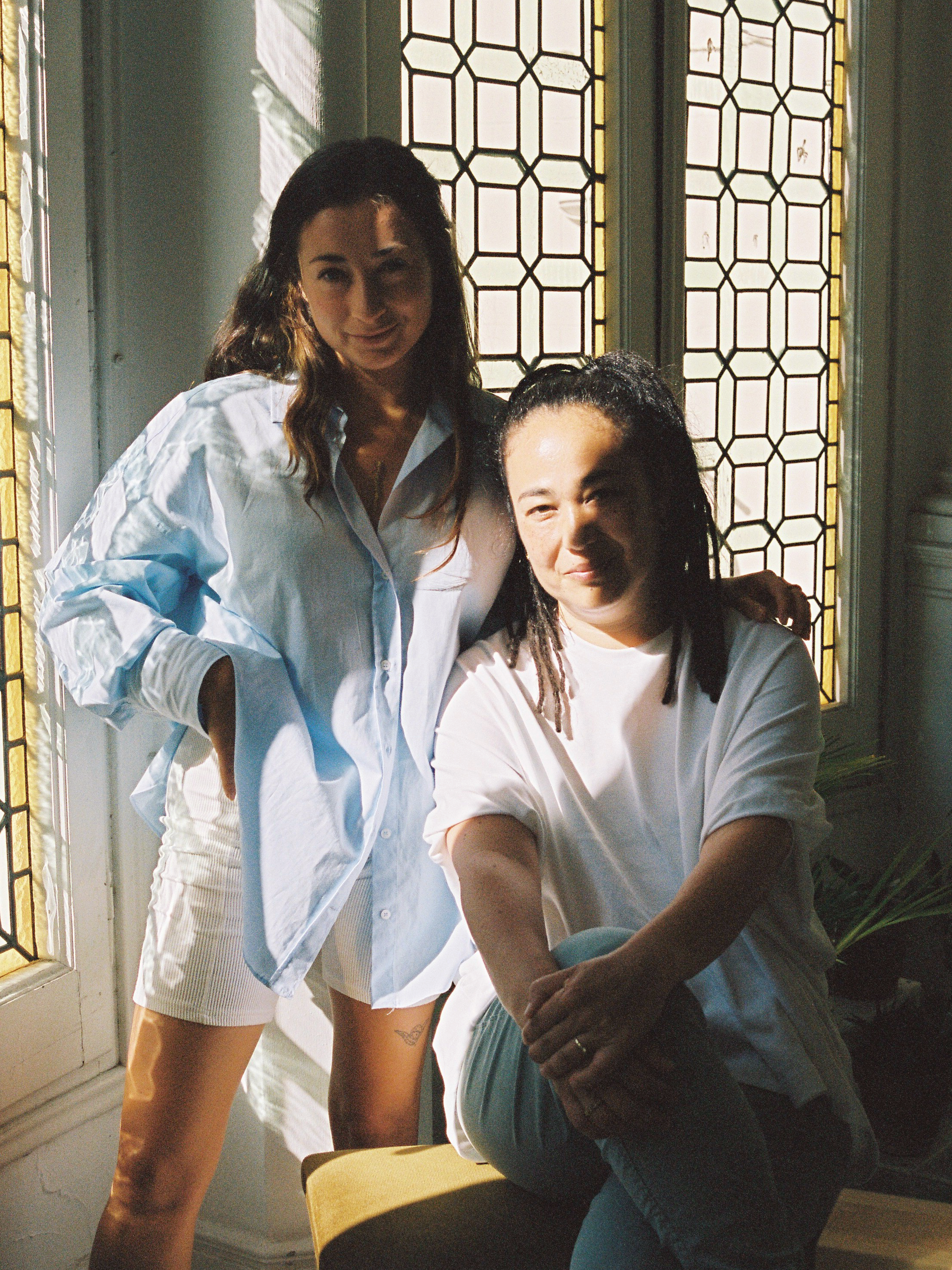
Interview / Barcelona
2021
Akyute { Saye }
( ENG )
WIP below Spanish.
We were interviewed by Saye, and welcomed Mariona Calathea to portray our studio.
How was Akyute born?
Akyute (@akyute_) was founded in Barcelona in 2019 by Miriam Felici (@ohh_m), Natalia Gima (@natalia_gima) and Magdalena Hart (@magohart). We found ourselves involved in developing projects within the same area of research whilst studying electronic prototyping at the Audiovisual Innovation & Interactive Environments Master’s Degree at Bau, Centre Universitari de Disseny de Barcelona (2019).
We were brought together by chance, developing a co-creative musical circuit board, leading us to start our investigation on the concept of non-human intelligences and the environment of biodata visualization.
This was a turning point for each of us, not only due to the change of paradigm we were processing whilst studying these kinds of topics; but the act of coming together and collaborating from very different backgrounds and approaches to design was very empowering.
This led us to develop our prototype and performance, titled “Symbionic”, a “wearable” created to modulate sound through touch. Followed by the adaptation of the format and system, to create our first interactive installation “Mirror Mirror” showcased at MUTEK ES 2019. Both “Symbionic” and “Mirror Mirror” were experiences focused on putting in evidence the intangible reflection of nature on ourselves and vice versa, something most of humans living in western environments are oblivious to in their daily lives.
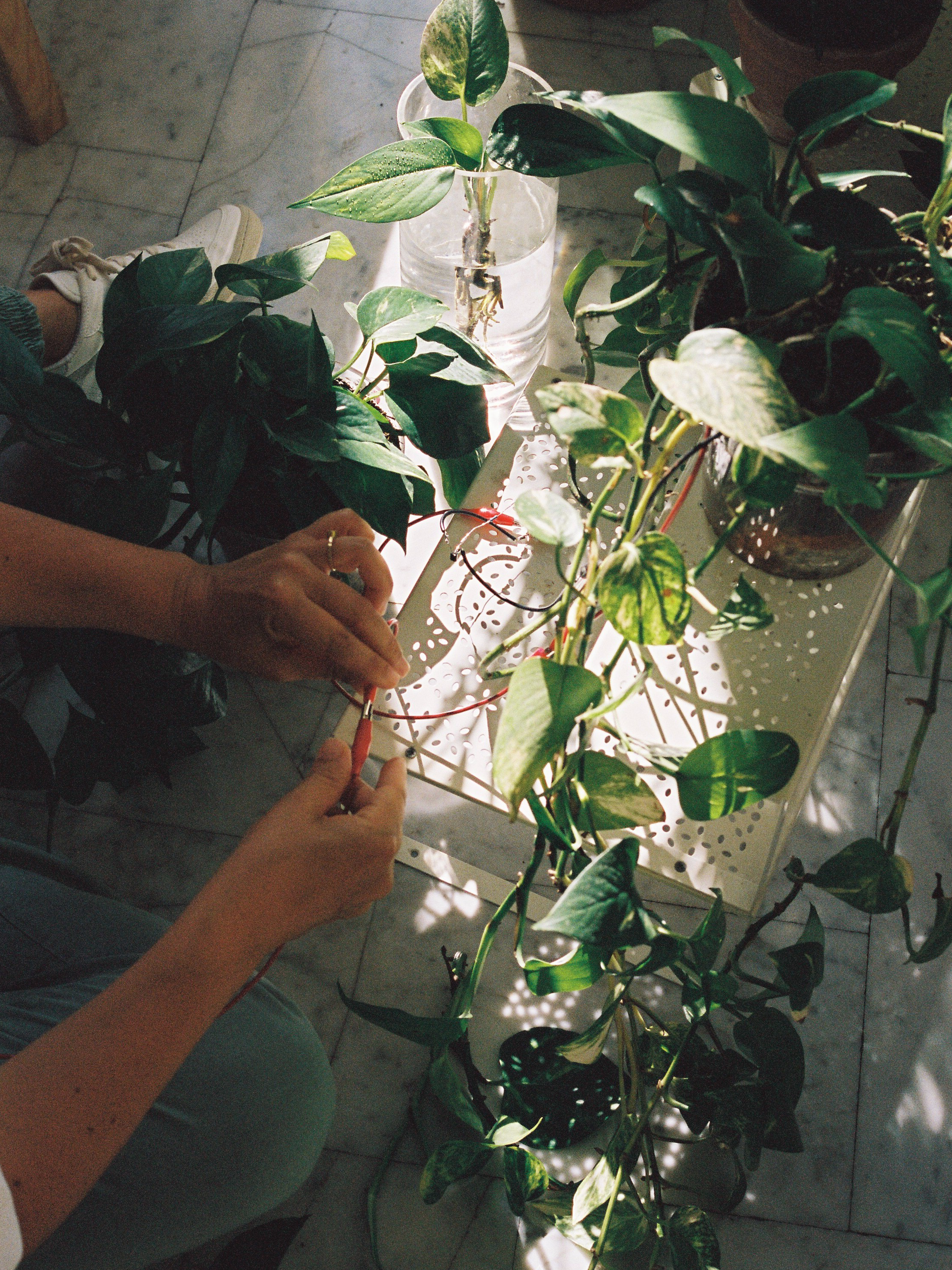
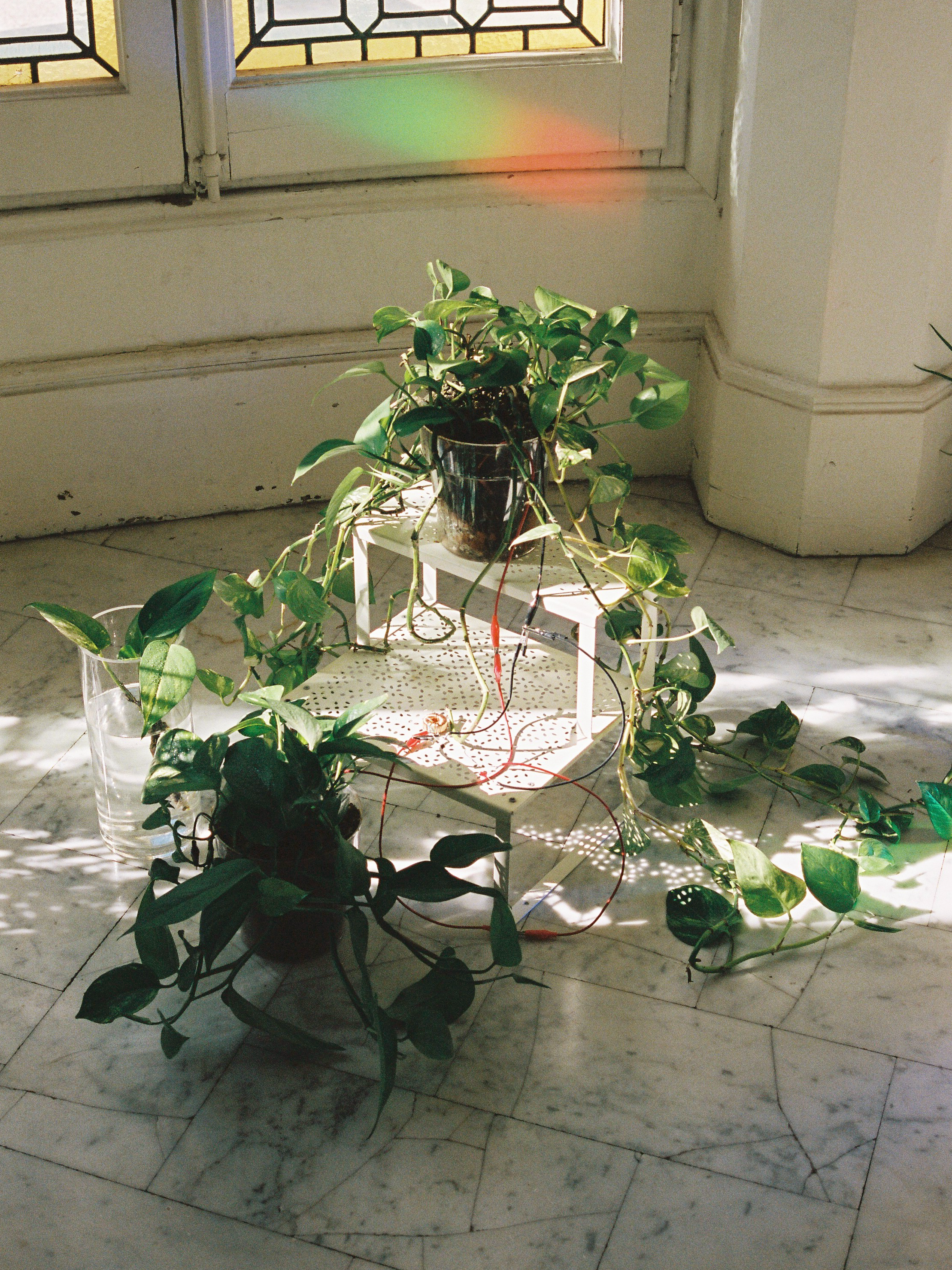
How can you use new technology to communicate/connect with plants?
We use technology as a tool to visualize what is invisible to the human eye, opening dialogue towards what it means to be human inhabiting the natural environment. Through the recollection of plant-biodata, the electromagnetic field variations they emit within a capacitive circuit, we are able to communicate these ideas through an artistic approach. In the specific case of the biodata visualization experiences previously mentioned, we speculated on creating a future where all species are able to communicate fluently with one another, leading us to investigate the possibilities of closing the gap which separates humans from “nature”. In order to be able to transform this speculation from possible to plausible, and progress towards a future where we can read nature and vice versa, humanity must acknowledge the reductionist the western notions of intelligence are, and recognize how each subject has the ability to modify their behavior to re-organize and create complex systems, by means cultivating awareness connected to non-human intelligence.
After several projects in this direction, what have you discovered and what conclusions have you come to?
After working on the topic of non-human intelligence for over two years now, and finding new ways and formats to communicate our ideas, our vision as a collective has been in constant mutation, and it will carry on to do so. For instance, talking of discoveries and conclusions, a vital concept that we come to develop over the years, is that of “Nature/Culture''.
Neither are dissociated from one another; we cannot understand one without taking into consideration the other. We feel very close to Haraway definition of Natureculture as “a synthesis of nature and culture that recognizes their inseparability in ecological relationships that are both biophysically and socially formed” (Fuentes 2010; Haraway 2003).” Culturally, we are influenced by binary ideas, provoking the idea of the “other” as exclusive and non-integrative, whereas, “Nature/Culture” takes into consideration the absolute interaction of our environment, recognizing it as a conjunction of interconnected ecosystems in which we nourish each other, free of hierarchies and power-based relationships… Creation and design wise specifically, we have each been able to affirm our role within the collective, delegating tasks within our strong points and creating a dynamic flow between us.
After bringing our focus specifically towards both ephemeral and spatial design pieces, we have developed a solid base towards the foundation of our design practice, and our approach as a collective.
 What does music have to offer that other artistic fields don’t?
What does music have to offer that other artistic fields don’t? We all have a certain idea of what music represents to each other. We also know our senses are very limited in perceiving our surroundings, we cannot see more that our sight allows us, nor can we feel more than our skin permits us, and repeatedly with our 6 senses.
In the case of our hearing, it too has a range, our absolute auditive limit is between 20 - 20,000 Hz, but due to the complexity of our nervous system, our vital organs each emit their own electrical frequencies that are permeable to all frequencies surrounding, audible or not. This allows us to understand why music allows us to connect with our senses on a profound level, having the ability to change the complete perception of what we are experiencing. Music has also always had a profound symbolic value. In many different philosophies and religions, from mantras to prayers, music has the power to bring people together and through such rituals it has the power to create communities and help humans get in touch with their surroundings: with the “cosmo”.
This is something that continues to fascinate us, the ability music has to modify our perception and our behaviour, and augment our overall experience of something.
When you carry out those performances/installations, what do you feel at a sensory level? How would you describe the experience?
Work wise, the whole process of designing and developing the installation on site with the team is very stimulating, our dynamic flows so easily, making the task of creating a space / time immersion a great play-space. Our design methodology generally starts based on a commission or opportunity, where we unravel the concept based on where we are at as a collective.
Our practice and concept is constantly in transition, so maybe we´ve been investigating a certain idea before receiving the commission, and for that motive, we orientate the piece to develop around where we want to explore. What's interesting is when we are invited to exhibit a piece we´ve developed maybe a year before-hand, where our perspective and concepts were in a completely different place, meaning to be able to pursue with a clients commission, means reevaluating our previous project and reinterpreting it based on who we are today.
It can get very complex! Anyway, after having a general idea of where we want to go concept wise, we are allowed one or two visits to the space to intervene before taking forward the ephemeral installation- although sometimes, we never even get to see the space beforehand! Here we evaluate spacing, lighting, sound, the general feeling of the space, and the aesthetics of it, to later be able to design a site-specific piece perfect for the future-situation. We may have Plan A, B, C all the way up to Z lined up, just in case let's say, the day is cloudy on the day of the installation, meaning we now need an artificial lighting to simulate the sun on our specifically designed reflective materials, etc. so there's a huge part of improvisation involved in every piece.
There are always both internal and external factors changing things at the last minute, creating a design in constant transition and dialogue with the space, it can get messy, but it's always very fun.
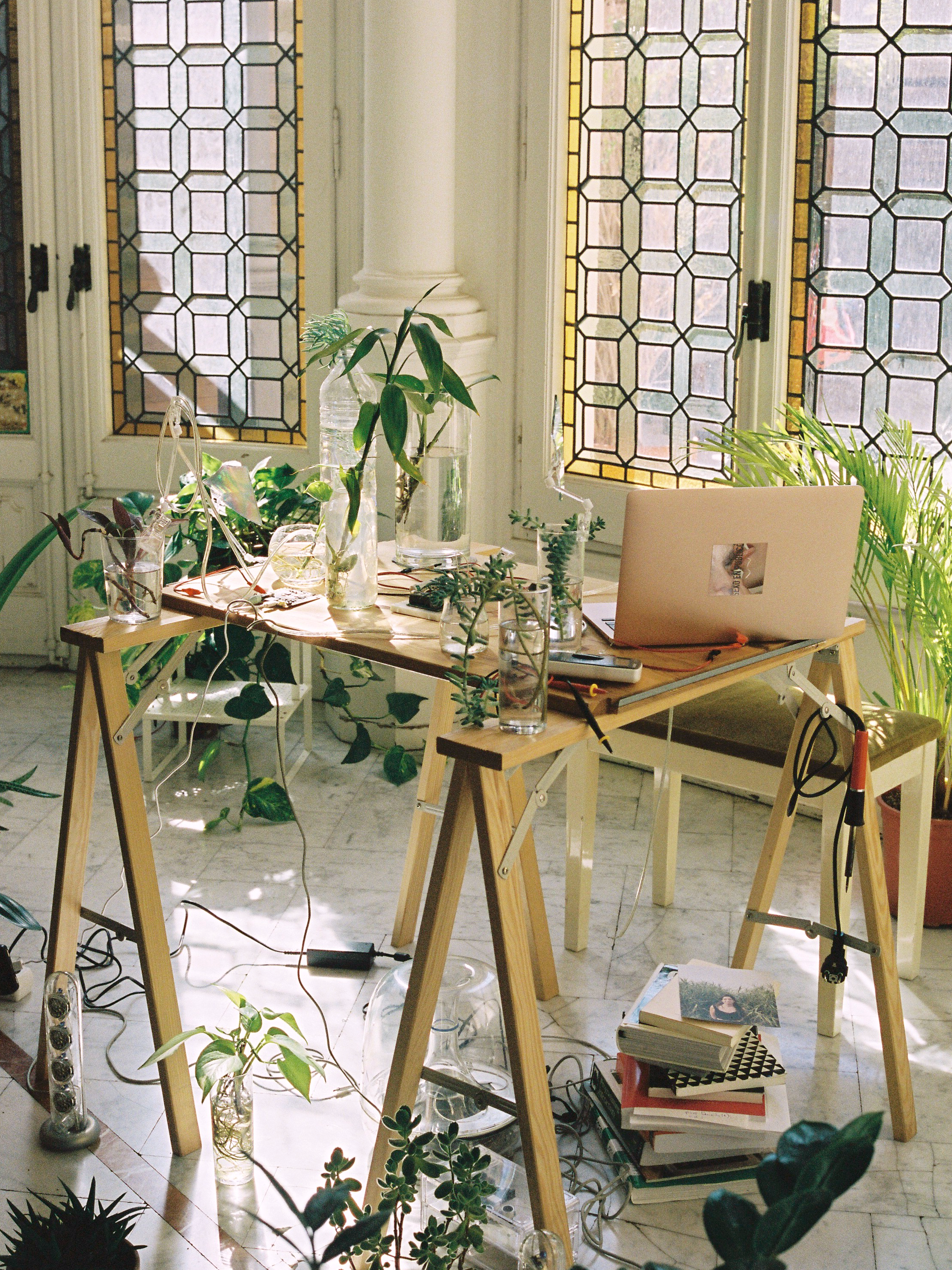
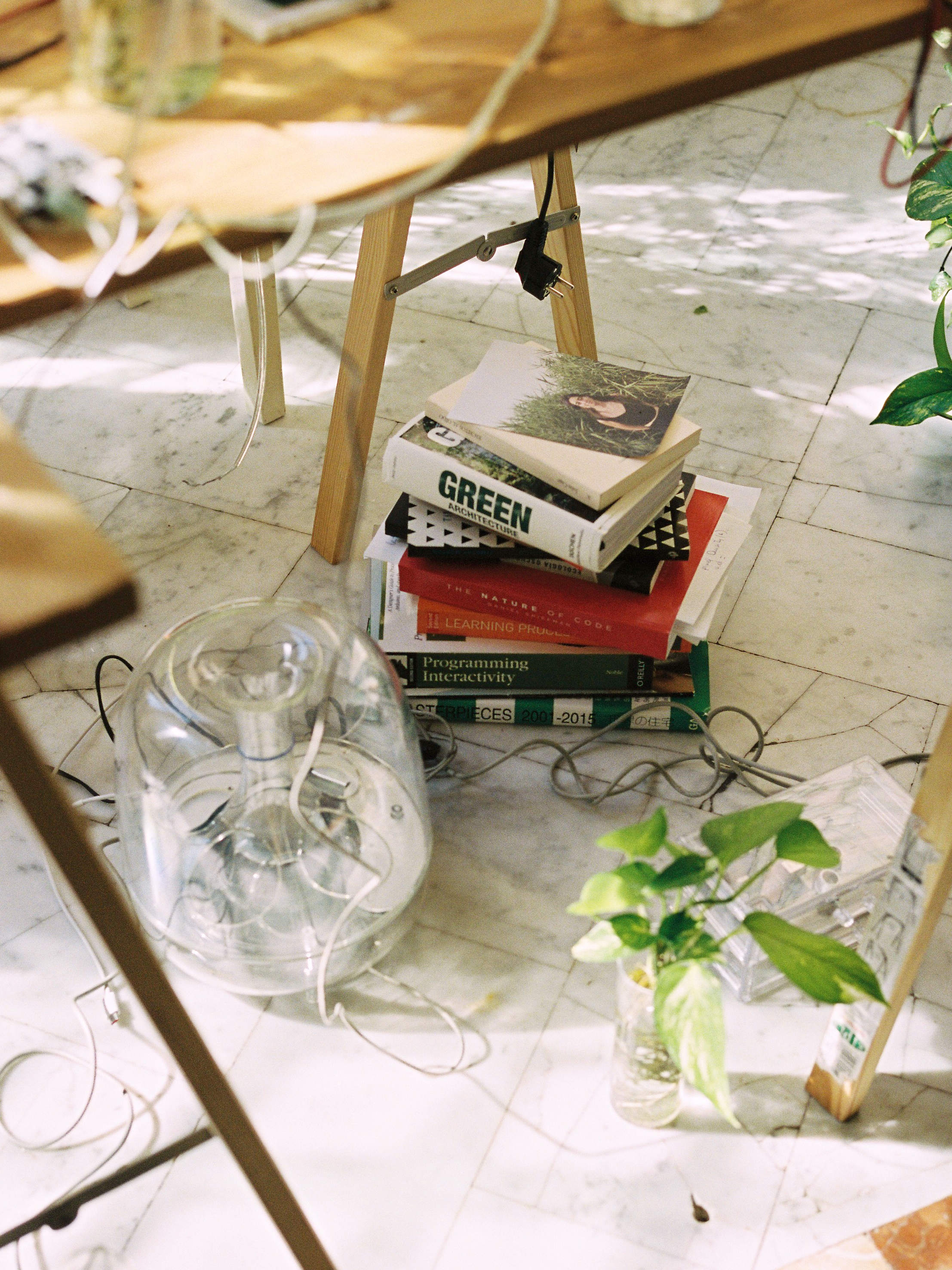 Do you think that today we can connect with nature in an unconventional way?
Do you think that today we can connect with nature in an unconventional way? What's interesting is that connecting to nature in an “unconventional” way, oddly enough, would be to incorporate it into our daily lifestyle and routine. This just proves how out of touch our society is from our environment. Practices such as biodesign and diybio are working towards creating this “unconventional” connection to nature, deconstructing the borders in between the interior and exterior of our urban design for instance. Since entering the Anthropocene, there has been a rupture in the harmony we maintain with our environment, as a “species” we have exploited our resources, placing humanity at the tip of a pyramid, where we wrongly think we have the right to “dominate” non-human entities and the given environment.
What we love about our practice is how it taught us to live in relation with nature, and not in its domination. Something we feel is essential to communicate in today's world. So if it means designing an installation to sonify the biodata of a garden to open dialogue and for you to re-question your position as human living within an ecosystem, then so be it!
Have you done any other projects that do not revolve around our connection to nature? With a different focus?
Installation wise, we tend to use tangible interfaces, be those a plant or a ray of light, or the surface you can imagine. Although through our work we tend to aim to sensibilize the public on nature related topics, we have done several installations that do not include the use of plants but most of them work as data sonification or visualisation systems. In general, we like thinking our practice stands where we try to visualize the invisible, hence our attention always revolves around some sort of mechanism or system that helps us convey to the public the theme we want to talk about or the issue we are exploring. Yet, along the years we have come to adapt our practice in a variety of other formats, working through 3D design and VR experiences, performances, workshops, sculptural pieces, etc. One of our ongoing projects is currently developing a Photo Microbial Fuel Cell, which consists of a lamp design using photosynthesis as a source of electricity, making the most of the natural metabolism that occurs in a plant. This would be a kind of DIYBIO project.
What references can you recommend to us? Books, movies, documentaries, podcasts, etc.
We tend to read books and papers from different fields, we are profoundly interested in understanding the relations between reality, technology and nature from different perspectives and voices. Some of the authors that have inspired us and that have helped us understanding better the world we live in and shaping the conceptual side of our work as artists are: Donna Haraway, Timothy Morton, Franco “Bifo” Berardi, Federico Campagna, James Bridle, Mark Fisher, Silvia Federici, Andrea Long Chu, Elisa Cuter, McKenzie Wark, Monica Gagliano, Anthony Dunne and Fiona Raby.
What is the future of Akyute like?
Well, by living the pandemic separately in very different situations, and needing to adapt with the given circumstances. Each of us started to develop our own projects based on where we were, with what we had been working on as a collective, opening Akyute to the world and specifying ourselves in very different areas.
So reconnecting and coming back to Barcelona, each of us with new information and skills, and with our roles within the team more defined than ever, has given us the desire to open up our team to more people. We have just incorporated Gio Scavo to the team as our curator, as well as Camila Fernández as our lighting designer, and we are currently on the lookout for a landscape designer / floral-artist based in Barcelona to help us take our installations just that little bit further!
Our next installation shall be exhibited on the 17th of July, 2021 at the Roots and Seeds festival, organized by Quo Artis and Ars Electronica.
Thank you Saye for having us!
